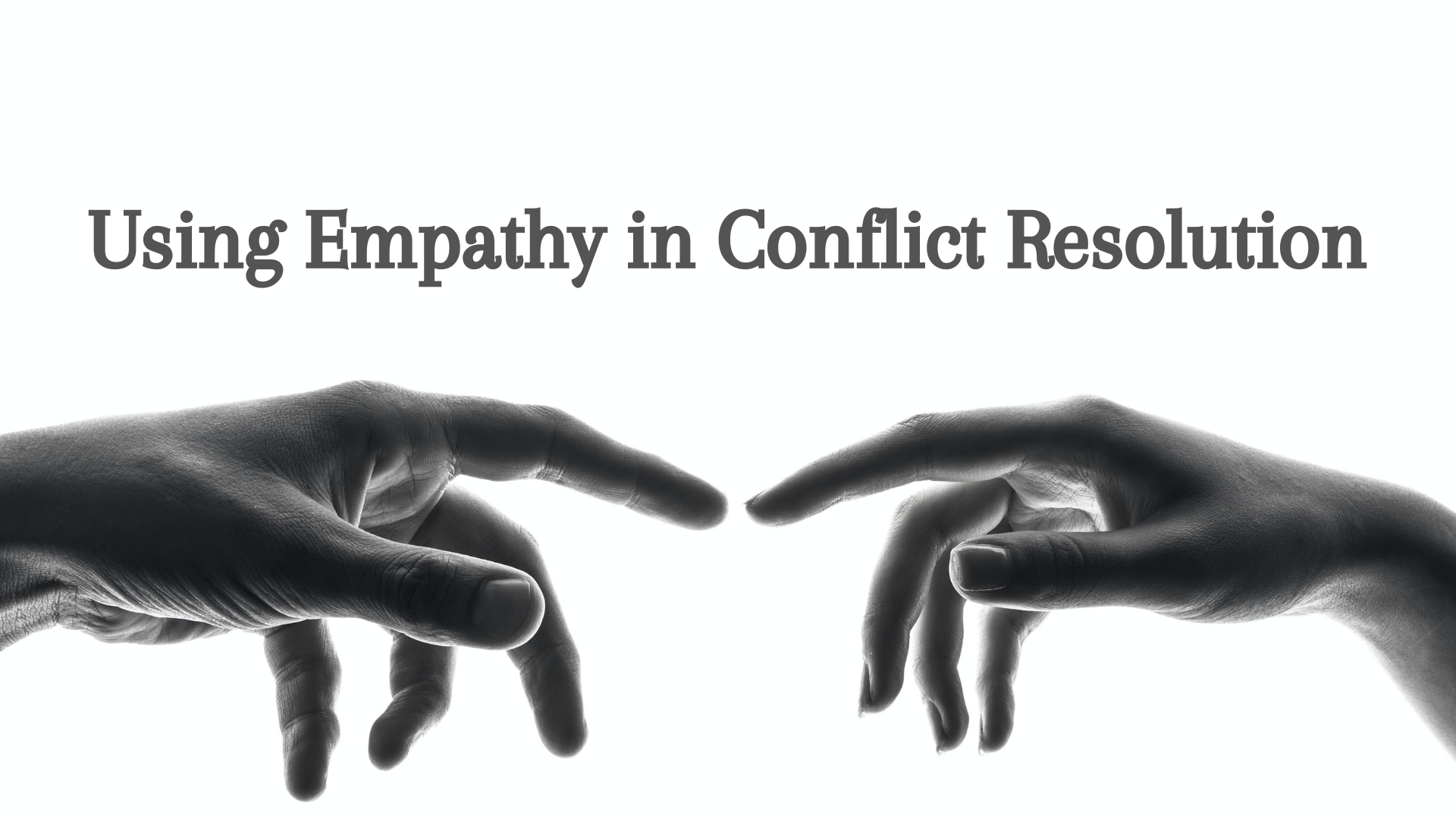Say It Like You (Actually) Mean It - [The Vague Nature of Communication & The Importance of Direct in an Indirect World]
/PART ONE — THE DEFAULT DETAILS OF COMMUNICATING
A couple ground rules from two main communication principles to get us started:
Communication is constant — therefore, everything you do says something.
Communication is irreversible — therefore, once something has been communicated, no matter how trivial, it has permanently created a reality. As Abraham Joshua Heschel says in commenting on the Jewish creation narrative, “Words create worlds.”
But the communication process gets even trickier — because how do you know what something means?
Communication is the act of encoding a message that gets sent to a receiver who then decodes the message. While in an ideal world, this could be very simple, we must face the reality that words don’t have inherent meaning. There is not a single, absolute definition to any word or piece of communication. The only way to decode an encoded message, then, is to develop a shared meaning between the sender and receiver. The evolution of language has been a constant pursuit of creating shared meaning for certain symbols, words, sounds, and gestures. Which implies language is a tool, or even a technology, that we construct to help make this process easier.
When two parties agree in a specific situational context on the meaning of a word, then you have shared meaning.
Slight problem, no two people completely share the same context. Therefore, an intended meaning that a sender encodes will never completely be what the receiver interprets.
Back to our ground rules, we then have the added complexity that we are constantly communicating beyond the words themselves — and these communicative acts also have no inherent meaning and must also be interpreted. To make this even more overwhelming, no matter how ambiguous the communication, whatever is communicated will be permanently present however it is interpreted, forever.
If you have ever found yourself wondering, “What did they mean by that word they used? Was it a jab at my personality or just a random, meaningless physiological response?” Or if you have wondered what someone meant when they responded with that strange detail or did that thing with their eyes — you have been the recipient of the vague nature of communication.
By default, communication will be indirect — it is a natural manifestation of communication’s difficulty. It will be blurred, complicated, ambiguous, & uncertain.
A fair reaction is to wonder how we are to get through life, let alone a relationship, without easily understood and precise communication. Because the vague nature of this constant act leaves us incessantly wondering what another person means — not to mention that uncertainty is only heightened by its persistent onslaught and that its permanent effects implies that much is at stake.
In a world where communication is difficult, the most important thing we might do for our relational health is to communicate directly; to communicate what we actually mean.
PART TWO — A BRIEF HISTORY OF INDIRECT COMMUNICATION
If you were waiting for good news…you’ll have to keep waiting.
Because we also make the problem worse by often choosing to communicate indirectly. Not only are there natural obstacles, we usually intentionally permit indirect communication even though we know it results in difficulty. The default state is easier, but do we also have an underlying agenda to choose indirect communication?
If we know indirect communication will complicate the communicative act, why would we sabotage what is already so complex?
Direct communication is us taking a realized goal, desire, want, need, or idea and sharing it with another person in a way that fully discloses our intended objective. Indirect communication, consequently, is the choice to disguise or blur what is in our heads so that it is not as easily decoded by the receiver. The difference between seeing exactly what is in someone’s head and the reality by which it is portrayed exemplifies that we rarely communicate directly, that doing so would be very difficult in light of the multiple moving pieces that stand in the way, and that we don’t always want our motivations or goals to come out exactly as we know them internally.
So what do we do about both the natural barriers to direct communication as well as our proclivity to resort to it in our relationships?
To begin understanding why, we need to go back to the ground rules — because once that message, in whatever form it is sent, is out…we can’t take it back. Indirect communication allows us to avoid that risk and its ramifications.
Another reason we might do this is because we haven’t processed what we mean — the goals we are acting out through our communication might remain subconsciously hidden even to us; which means they will naturally be indirect to our receiver. If we haven’t done the work to be aware of what we actually mean, then we will send a message drenched in uncertainty.
The largest reason, however, is that direct communication might not be beneficial — we may be intentionally uncertain as part of an agenda. Sometimes, we may actually want to veil and disguise what we actually mean.
Even if we are utilizing one of the less antagonistic options, it is often true that we don’t just open our mouths and blurt out fully disclosed information. Whether purposeful or less deliberate or even as a natural byproduct of language’s complexity, we have a difficult time communicating clearly and honestly. We see this manifest in several ways:
When we say nothing and expect to be understood
When we don’t say something directly to please people — often leaving a seething rage and resentment lingering in our souls.
When we don’t say something to avoid potential conflict — we know our message could be misconstrued or misunderstood or that the receiver disagrees. In response, we bury what we actually mean until it inadvertently explodes in anger, fear, or brokenness.
When we don’t say something because we are indifferent or apathetic — we would rather just avoid the act or we just don’t care. We would rather tough it out on our own and act like everything is fine even if it isn’t.
Or when we communicate by nagging or complaining instead of just saying what is really there — we replace the actual message with an indirect form of control in an attempt to get the person to understand behind a vague confluence of words and actions. We say one thing, but it is really about something else and we want them to figure it out.
We would rather make noise or say nothing at all then say what we actually mean.
Quick note to consider as this article’s journey continues — direct communication doesn’t mean you can naively or angrily say whatever you want. The process of empathic communication is still necessary for the good of human beings involved. If your direct communication boils down to being an asshole, then you might have your own junk you should work on before just blurting out destruction. Always consider that what you are communicating might be a larger problem with yourself than whether you are communicating indirectly or not. There is room to communicate in ways that might not be preferred because it will compel good which we will get to shortly. Indirect communication is not refraining from harsh words because you are being nice — so please don’t use this concept as a justification to be adverse while ignoring your own potential character flaws. Usually, when we are confrontational by using anger or hatred, we are actually indirectly communicating and avoiding the real issue that we’ve hidden and obscured somewhere inside of us. You might have to dig a little deeper into your soul to unveil what you actually mean when you communicate like this — which could be laced with fear, but aggression, even if it feels safe, is usually going to end up being counter-productive.
Back to indirect communication.
Most indirect communication, therefore, emerges through fear. The goal becomes to not share what we might want to and, instead, avoid a risk. In many instances, beyond the natural reasons embedded in communication’s difficulty or in our agendas, this fear was nurtured early in life. Indirect communication may come from an intolerance to expressing ourselves sincerely — so we learned to edit ourselves to avoid the conflict. Or maybe others expressed displeasure when we transparently shared or acted in a way that they considered rough or uncomfortable or unacceptable to their standards — their judgment being a form of control that we internalized so we could please them. Maybe we felt others were fragile and we didn’t want to add to their problems or hurt so we kept things to ourselves. Maybe the person was always preoccupied or busy — expressing ourselves directly was secondary compared to their more important priorities.
Our culture, unfortunately, has taught us that we can’t be both honest and loved.
Indirect communication might just be a direct result.
And we may be trapped in its comfortable silhouette.
PART THREE - THE RISK OF MUTUAL KNOWLEDGE
A basic example that seems trivial would be some sort of common request — for example, “It’d be sweet if you grabbed me a coffee.”
Now, quite obviously, what we really mean is that we want a coffee, but we don’t want to get up and it would be easier if the other person just did it. We are comfortable asking them because of our relationship and they are already out so…
Saying this would be a bit long winded instead of “It’d be sweet if you grabbed me a coffee,” but we don’t actually mean that. Grabbing the coffee wouldn’t be ‘sweet’ (unless they put a lot of sugar in it) and we don’t mean that we would find it culturally cool. We want them to get us a coffee, but instead of just saying it that way, we use a more rounded form of language.
Embedded in our daily, habitual conversations is a breadth of indirect communication. Though we typically understand what the other person implies, they are still implying one thing while saying another. This is also what someone means when they talk about ‘filtering’ their word choice.
We do this all the time.
And it might be because, even in such a trivial example as requesting coffee and even though we might not be consciously considering it, there is still a benefit.
How about a more obvious example — a couple has been hanging out and one of the people softly says, “Do you want to go back to my place?” In the 19th century (made popular in the 20th century by MAD Magazine) it might have been, “Do you want to come up and see my etchings?” Or as is popular in contemporary culture, “Do you wanna watch Netflix and chill?”
I assume we all know what this means and the people involved probably do, too. Yet, there is just enough uncertainty that the request is not completely and transparently obvious. Because we might know and each person might know, but the knowledge is not mutual knowledge. If you’ve ever flipped someone off by sticking your middle finger up in Western culture, then you have experienced this. We know what it means, even though it is just a random gesture, because the meaning has become shared, but it is still indirect because the meaning is just un-obvious enough to accomplish an often unnoticed goal — one that is often true about most non-verbal communication because of its ambiguity (which is why direct communication should, often, involve the more clarifying form of words; though they can be just as indirect, misunderstood, and in need of clarification).
Many of our requests, threats, propositions, or expressions of how we feel — instead of just directly naming what we mean and intend — are veiled and disguised through innuendo or complicated forms of communication where the other has to do a second step of work in decoding the message. When we do this, we add another act of interpretation, even if it is a commonly understood phrase, where the receiver has to read between the lines. We blur just enough that the other person will have to guess, even a little bit, because it accomplishes something in our favor.
We get to refrain from showing all of our cards while playing the relational game.
If we only implied something, then they might not ever know what we really meant.
Even if we show most of the cards and the other person can make a well-educated guess on what cards we are holding, there is still a built in safety called ‘Individual Knowledge’ — as opposed to ‘Mutual Knowledge’.
Which is why, when some sort of political revolution is taking place, mutual knowledge can lead to change through direct communication. Let’s say there is an authoritarian dictator that is despised. Throughout history, many individuals have sat in their homes, stricken with poverty and injustice, hating the regime that has claimed power over them. The problem is that, if this knowledge is only individual, you don’t know that every one else in the empire despises the dictator even though you may assume that it is equally bad for them as it is for you. Many unfavorable governments have existed and continued because no one knew that they weren’t the only one who felt the way they did.
But what happened if you found out that others also hated the dictator? If the knowledge assembled, a collective power took place. You always knew that you despised what was happening, but when you knew that others knew and when you knew that others knew that you knew, that knowledge was now mutual and the larger group now held a common voice. It makes sense that with more communicative technology, from writing to social media, uprisings and revolutions became more common — because it was easier for individual knowledge to become mutual knowledge. You become aware that someone else sees what you see and that shared knowledge of knowing that they see it, too, strengthens your voice.
When knowledge is individual, you both might know what is meant, but the abstract or indirect nature of what might be communicated keeps you from knowing if they know and if they know that you know. Individual knowledge allows you to maintain ambiguity. They can’t claim that you tried to seduce them because you didn’t directly say that and they don’t know if you are just dull or ignorant. Using the innuendo preserves the option to claim that you didn’t know “Netflix and chill” meant a sexual advance.
But if you say it directly, you reveal everything, and now that knowledge is mutual for everyone involved — permanently.
You both know that the other knows exactly what was communicated — and now it is out there for everyone involved to navigate around. Direct communication places the potential elephant overtly in the middle of the room.
Do you see why we often avoid being direct?
When you communicate, you have two responsibilities — to offer some sort of meaning (included in any communicative act) while also navigating the relationship involved. In offering your meaning, then, there is much at stake and it might seem better to avoid the potential risk even at the expense of the potential reward. When we aren’t quite sure if we are on the same page — which is, to be honest, most of the time — we use indirect language to avoid a potentially awkward result.
To safely involve that other person, you just might force them to read between the lines.
You might just force them to deal with indirect communication and keep the knowledge with the individual.
Even if it is just asking for coffee, a situation where ambiguity doesn’t seem all that necessary, we are still more comfortable because the elephant stays out of the room, we still get to hold some of cards just in case we need them, and we avoid the potential risks of mutual knowledge. Everyone might know what was meant, but we leave some guessing to be done on what we meant or if we included all the details or if we actually meant what we said — we still get to hold the power in the relationship and avoid any tension, any awkwardness, and any fear of what you can’t take back. You can deny any claims by not being certain or blatant.
But if your language is clear and overt — the knowledge becomes mutual, transparent, and permanent.
And it might not be worth the risk.
PART FOUR — WHY THE RISK MIGHT BE WORTH IT
Directly expressing our wants, hurts, requests, and ideas just might have a reward that outweighs the risk.
First, when you show your cards, you empower the other.
While this is vulnerable and vulnerability must always be handled with care because of the dangers of making yourself powerless to another being, the potential gain is a depth of trust in the relationship. By showing your cards, you invite them into who you really are and what is really happening — both parties are able to collaborate on the best ways to move forward. As opposed to each party guessing in isolation, the strength in numbers offers opportunities that neither of you would discover on your own. It might just be coffee, but even that situation has the potential to create a shared bond based on mutual knowledge that can strengthen a relationship if you just say what you actually mean.
Second, the honesty of what is real allows both parties to make proper decisions in the present, based on knowing what they are handling, in reference to the future.
The sexual advance is a good example — the sender of the message is revealing something that is actually in their head and the receiver has more clear knowledge about who this other person is. While it could lead to the relationship breaking off earlier than it might’ve had the knowledge been kept at the individual level, it can also lead to a more nuanced experience for both parties moving forward. Direct communication keeps either side from manipulating or hiding details that could drag someone along.
Marketing or trying to get someone to join your organization is the most realized form of indirect communication — we have a tendency to tell people what they want to hear to trick them into sticking around so we can gain the advantage of their participation or consumption. This creates a fragile cooperation whereas an upfront disclosure of all details would allow both parties to make a decision that would allow them not to waste their time or allow them to fully invest in the mutual knowledge.
Third, direct communication has a better chance of solving actual issues.
It is better to say exactly what is happening so it can be addressed (and possibly come to the realization that there isn’t an actual problem) versus dancing around the issue in hopes that something will come from the dance. It is better to express reality so both people can act on what is really going on. Confrontation can be cleansing. The alternative is that both people continue on living in a fiction, even if they both know it is a fiction.
In combination with the second point, this is why writing the letter or having the hard conversation where you reveal and name the actual issue is so cathartic and often leads to improved relationships.
In reference to anger, we usually lash out with harsh words thinking we are being direct, yet still hiding behind something that we either haven’t dealt with, don’t know how to articulate, or don’t want to share. In many cases where someone essentially says, “You are wrong and stupid and problematic,” they usually mean, “I am threatened or I am concerned about you.” More realistically, they might be trying to say that what is happening poses a fear of what I want to avoid the most and you are forcing me to confront something that I don’t want to confront. If you would just say that, even though it would require vulnerability and it would feel like a weak confession, both parties might be able to navigate the difficult terrain more effectively. Introspection can avoid utilizing this concept to justify an otherwise selfish behavior.
Further, sometimes we avoid saying a hard thing because we want to avoid conflict. Though there is a difference between saying a hard thing of truth than defending your myopic position by yelling and making lots of noise, we need to be honest that direct communication has the potential to compel both parties forward. Two things to keep in mind — if the words don’t involve both parties changing, then you are probably speaking through anger. Please see the above paragraph. Second, if the confrontation isn’t prophetic in the sense that it pulls the world into a better future, it is probably also a result of the above paragraph. But when you name, in relational trust with mutual knowledge, what isn’t okay and invite everyone forward, it is worth the tension that it may bring.
Traverse these waters delicately, but still, be direct.
Fourth, you can eliminate the fiction altogether.
What would a relationship look like if you knew the mind and intent of the other? What would change if you knew who the other truly was? In a committed relationship, this should be absolutely desired. If you have chosen to be with someone indefinitely and you are being lied to or shielded from certain parts of them, you aren’t actually fully with them. If you aren’t hearing difficult or confrontational parts of their being that may cause you concern, then you should actually be concerned — because they are either lying to you or you are being kept out in some way by a person who will always have difficult parts of their mind and soul. We often keep these things indirect for fear of endangering the other, but it is so much more endangering to keep the knowledge at the individual level. We must dare to tell those we are intimate with what is real. We must dare to say what we really mean. Our other option is to live in a fiction and accept a compromised existence of either guessing or never really knowing the person we are with.
Eliminating the fiction, though, will allow us to both interact with our worlds as they are, together.
In a more public sense, we must remember, too, that eventually knowledge will most likely become mutual. If it comes from someone who is not you or exposed outside of your intention, then you will lose authority, trust, and the virtue of owning your reality. There is an immediate benefit to indirect communication that tends to lose to long term damage. Saying something up front has the potential of a negative, but what is hidden will grow more toxic over time.
When we allow fictions to exist, people will fill in the gaps with their imagination.
But if we know what is really there, we can all work with that mutual knowledge for a collaborative, healthier future.
There is a collective power to mutual knowledge through explicit and direct communication. Yes, it will be difficult to open ourselves up and share what we would rather not, but there is certain isolation if we decide to avoid it.
But last, a note of warning:
Not everyone can handle your reality — in contexts of abuse, distrust, objectification, or apathy, direct communication can be, at best, unnecessary, and, at worst, harmful. Some people really just don’t care and intentional communication just might not change anything. But even further, some people might be out to hurt you or there may be some people who simply can’t deal with direct communication. Sometimes, indirect communication can protect others or protect yourself. Be cautious, then, in which contexts you decide to be vulnerable, transparent, and fully disclosed while acknowledging that this is an exception to the rule and shouldn’t be the norm.
In most settings, I encourage you to be diligent in choosing direct communication.
May you always ask, “Is this being direct? Is this embracing mutual knowledge? Is this communicating in a way that is best for everyone?”
And may you always see the value of saying it like you actually mean it.














![Three Reasons We're Lonely - [And Three Responses For Being Less So]](https://images.squarespace-cdn.com/content/v1/5963d280893fc02db1b9a659/1651234022075-7WEKZ2LGDVCR7IM74KE2/Loneliness+3+update+%283%29.png)





























